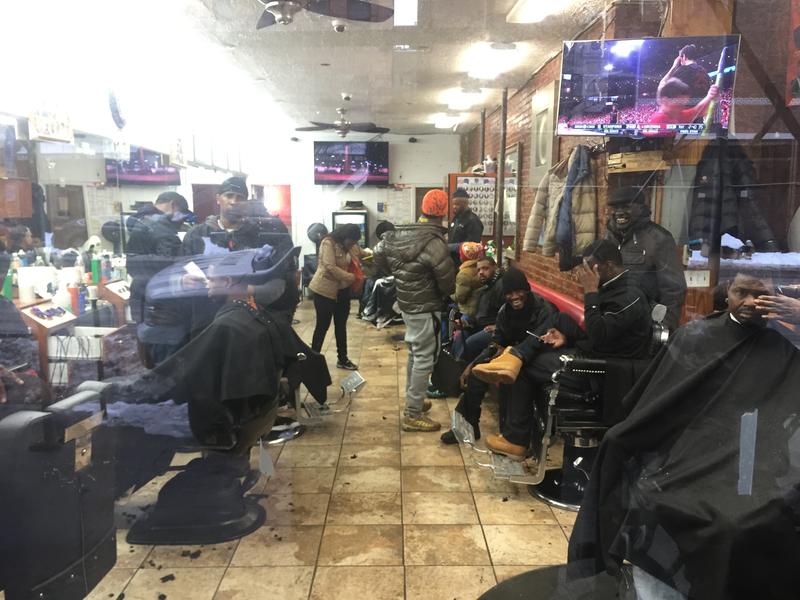From Stonewall To Ebony Lives Matter: The Myth Of ‘Tranquil’ Protests | GO Magazine
What stayed of this burnt-out authorities cruiser was actually a charred plot of concrete away from Beantown Pub. The cruiser was indeed ready alight the night time before, after another day of protests across the killing of George Floyd bubbled into violence. A trio of men, all white, endured at curb. One, just like me, had been taking pictures.
“That’s where they burned law enforcement vehicle,” someone stated, pointing toward blackened plot. He shook his mind. Exactly what a shame.
I caught even more snippets of dialogue when I stepped through the community Gardens toward Boston’s top-quality shopping promenade, Newbury Street, which in fact had already been hit greatly the night before by looters. A row of marble statues across the outdoors’s path, commemorating revolutionaries â all white, all male â bore labels from fresh spray paint. BLM. Dion (for Dion Johnson, shot to death in Arizona by a state trooper on 25). A new woman taking in the damage explained to her buddy that Ebony resides procedure protesters would not have triggered the damage, which she related to white supremacist agitators. Her cause: One of the sculptures defaced was in fact, according to research by the memoriam carved on their base, “a champion in the servant.”
Just like the guy beyond your Beantown Pub, trembling their mind at exactly what stayed of a cruiser’s roasting, the woman’s response reminded me of an uncomfortable truth about how we mythologize protests like types which happen to be at this time rocking most US places. Protests are peaceful if they’re to be taken severely. Some other acts which may feature them â vandalism, damage, usually guided toward police and causes in the organization â are simply just the task of terrible actors trying to stir up and agitate. Just as if protest itself isn’t meant to stir-up and agitate.
Once we approach a Pride already marred of the shutdown, the newest trend of protests â plus the unrest that follows â may in the beginning appear to be another blow to a frequently happy season the LGBTQ+ neighborhood. We will miss out the parades, the week-end in Provincetown, the tea dances, in addition to block functions â everything that people’ve started to take for granted each Summer.
But Pride it self came to be away from unrest, committed as a result of troublesome “bad actors” at Stonewall have beenn’t just calm. That they had every cause not to be.
The social context causing Stonewall was far from tranquil in terms of homosexual, transgender, and queer folk happened to be worried. In addition to the general repressive atmosphere through the 1950s, the sixties noticed purges on homosexual companies, where authorities made use of raids and entrapment to clear the metropolis of any “homosexual” effect. The newest York county Liquor Authority (SLA) would not give liquor certificates to any bar that catered to homosexuals as an easy way of frustrating event. Alternatively, but many of these locations fell in to the fingers of local mafia, have beenn’t nervous to provide unlawful hooch, blackmail consumers, and provide cash kickbacks for authorities to offer tip-offs before raids. Whenever raids did occur, individuals rounded upwards were often the many visibly “queer:” transgender people, butch lesbians, pull queens â anyone who freely defied gendered conventions.
Most of these facets shaped how it happened at Stonewall on June 28, 1969, which started as a significantly common raid around 1:20 a.m. Police stormed the properties, arrested people who weren’t clothed appropriately for their sex, and roughed up “suspects” who have been then dragged outside the house in handcuffs.
Much like many defining times, the altercation at Stonewall comes from an individual work of violence dedicated contrary to the bigger social backdrop: authorities physically assaulted Stormé DeLaverie, a dark drag king and now lesbian symbol, as she resisted arrest. But instead of using the hits quietly, she fought back. Relating to just what
she later on told
author Charles Kaiser, “The policeman hit myself, and I also hit him straight back. The cops had gotten the things they offered.”
Lots of witnesses, such as DeLaverie, have actually certainly recognized their due to the fact lady whom authorities assaulted, and exactly who tossed the very first punch, although accounts tend to be somewhat blended â as a group, the butch women was the first to ever react. Others quickly joined up with, pressuring police, who were outnumbered from the Stonewall clients while the collecting group, to barricade by themselves inside the club.
“Noses had gotten damaged, there were bruises and banged-up knuckles and such things as that, but no-one had been really hurt,” DeLaverie mentioned for the event. “the authorities had gotten the shock of their schedules whenever those queens arrived of these club and pulled down their own wigs and moved after them. We knew sooner or later people were getting alike attitude that I’d. They’d merely forced once many times.”
Again and again, this is apparently the mantra from those that have there been: they certainly were fed-up; they’d had sufficient. They would been regularly pushed below ground from the exact same societal forces that used law enforcement not to merely preserve purchase but to in addition drive those underground regarding existence. These were tired of becoming regarded as factors to abuse, degrade, and brutalize. As lose Major Griffin-Gracy, a patron at Stonewall during the uprising and transgender activist, recalled in an interview with
ABC News
: “we had been battling therefore was actually for our everyday lives.”
The sentiments expressed are echoed today by Black Lives procedure protesters. You’ll find, of course, some clear differences. A lot of us know police violence as “harmful” instead of company as usual. We also know trolls and real “bad stars” might co-opt demonstrations just to sow dissension. We like to tell apart, too, between interruption and deterioration, specially when the objectives tend to be regional stores and organizations already hard-hit from the coronavirus shutdown.
But too-much remains the same. The dangerous police. Authorities in riot gear. The brands with the white men seeking black men and women like George Floyd, Breonna Taylor, Michael Brown, Tamir Rice, Eric Gardner, and Walter Scott who may have died at their own hands while nothing generally seems to transform. Just a couple of times back, the president had a crowd of calm protesters outside of the White home dispersed with tear gas and plastic bullets so the guy could strut across Lafayette Square for a photograph op.
Once the oppressor’s base, or leg, is on your neck, symbolically and literally, answering “peacefully” is not a priority.
Talking with the PBS NewsHour a year ago, Karla Jay, one of many protesters exactly who joined Stonewall into the times pursuing the unsuccessful raid, recalled indicative she’d viewed published in a window by one of many urban area’s few apparent LGBTQ+ companies that required serenity and synergy aided by the local authorities forces. “I was shocked, as it seemed to me this particular had not been committed is peaceful â that police had begun this whole mess by going into the Stonewall for a payoff to stop those who happened to be having a drink, moving with the buddies,” she
said
. “I happened to be actually surprised.”
Since 1969, Pride features developed from an uprising into an organized and, yes, calm occasion, but in 2010’s celebrations â most likely, conducted digitally from your specific isolations â may happen amid the back ground of personal turmoil. Even though it will most likely not feel just like a time for remembering, we’ve got gone back again to all of our sources.



